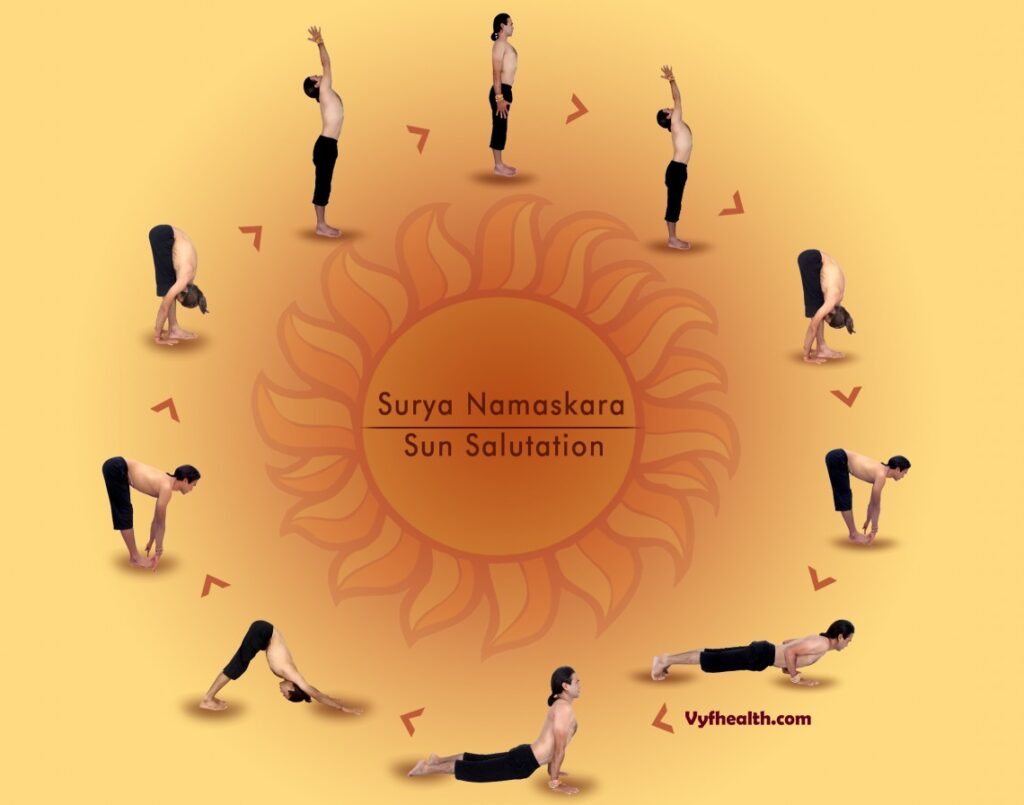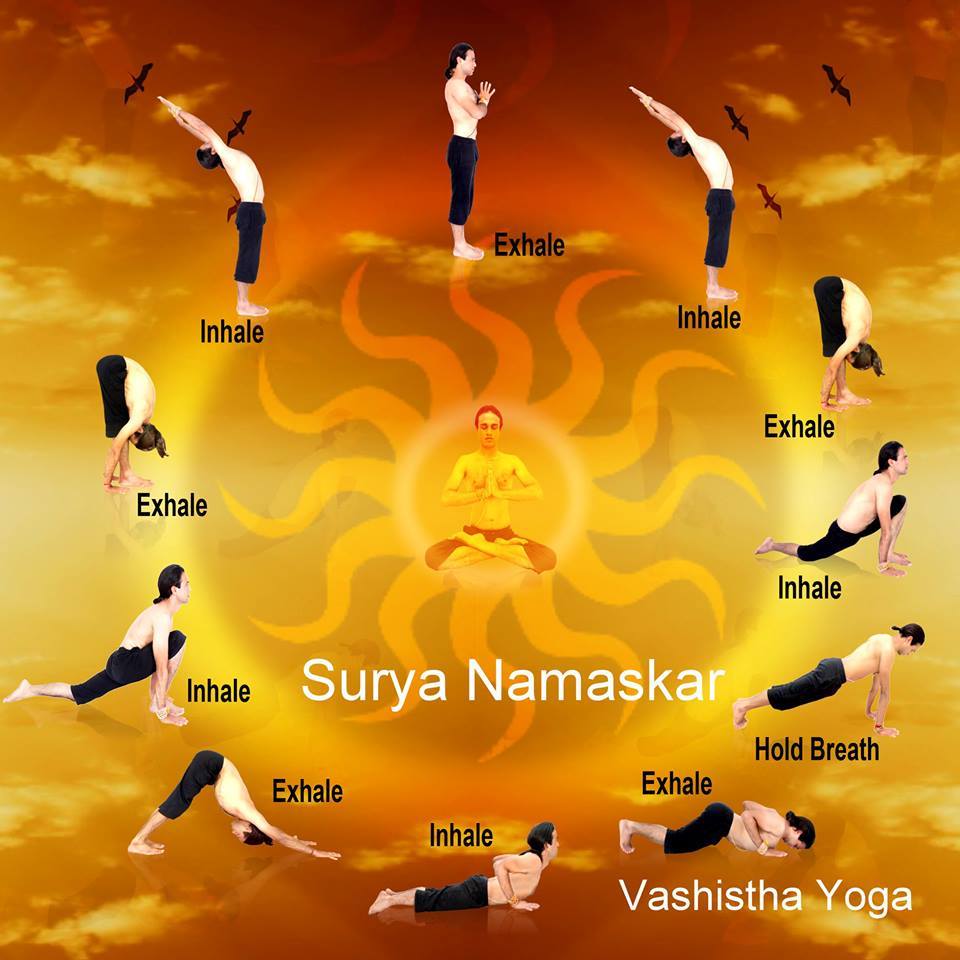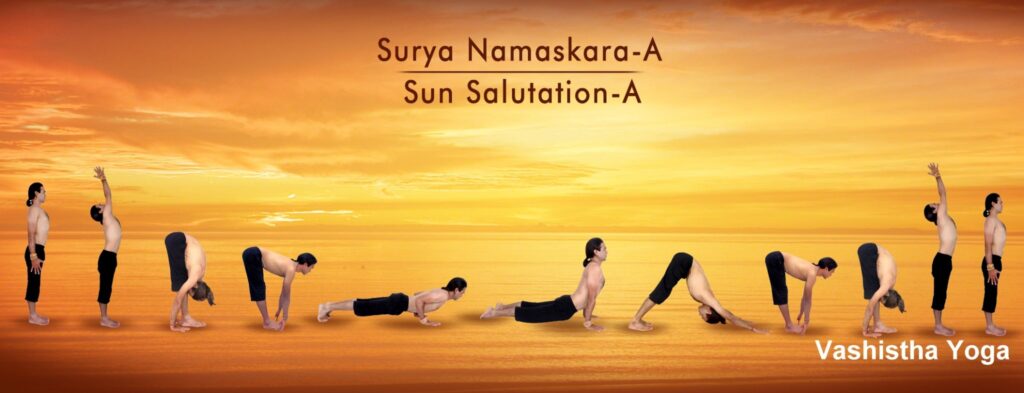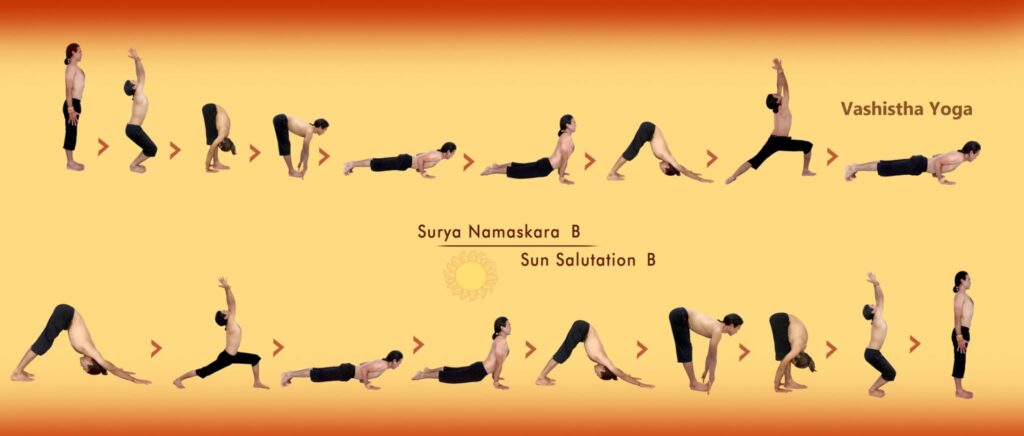
Surya Mantra
ādityasya namaskāran ye kurvanti dine dine āyuḥ prajñā balam vīryam tejasteśān ca jāyate
Meaning
Those who salute the sun every day, (their) life expectancy, consciousness, strength, courage and vital power would grow.
All published research shows that Surya Namaskar practice has some serious mind-body benefits. A yoga session is incomplete without Sun Salutation Practice. It is also believe that Surya Namaskara is in itself a complete practice. Basically Surya Namaskara is the foundation of yoga practice. It establishes the connection of movement and breath, and creates oneness between body, mind and spirit.
There are many variations of Surya Namaskara have evolved over the years, though several are quite similar. Common things in all are that method of Vinyasa flow or breathing synchronizing with movement and mindfulness. Here, we focus on three top famous variations of Sun Salutation from tradition of Hatha Yoga and Ashtanga Vinyasa Yoga and basic poses in order of performance it.
The nine basic poses, in order of performance, are:
Tadasana
Urdhva Hastasana
Uttanasana
Anjaneyasana
Dandasana
Chaturanga Dandasana
Urdhva Mukha Svanasana
Adho Mukha Svanasana
Virbhadrasana A
Surya Namaskara: Hatha Yoga Tradition
Hatha yoga Surya Namaskara is most famous and comparably easy in all other traditional method of salutation of sun. It is made up of 12 different spinal positions giving various vertebral movements to the spinal column.

Surya Namaskara A: Ashtanga Vinyasa Yoga Tradition
Sun Salutations are basic of any Vinyasa flow practice. There are two types of Surya Namaskara in Ashtanga Vinyasa System. The first consists of nine Vinyasa.


Surya Namaskara B: Ashtanga Vinyasa Yoga Tradition
The second type of Sun Salutation has seventeen vinyasa. Sun Salutation B is very challenging in itself, so try to move slowly with Ujjayi breathing and you will feel how this challenge becomes a sort of moving meditation.
